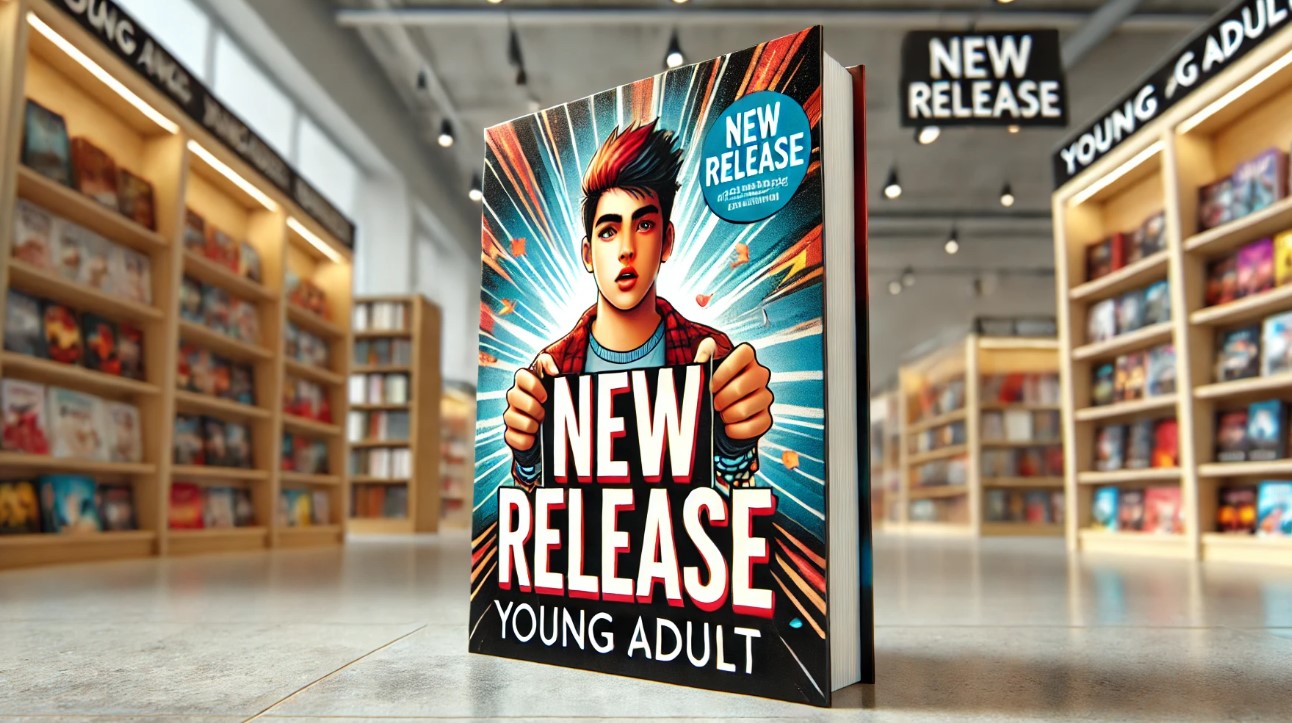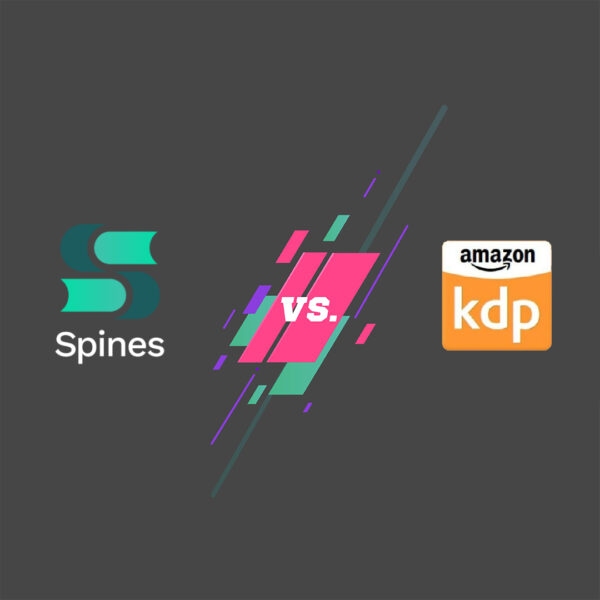The book world has undergone a major shake-up in recent years, and self-publishing a book has stepped into the spotlight as a powerful option for authors everywhere. What was once seen as a fallback for those who couldn’t land a traditional publishing deal is now a go-to choice for writers across all genres who want to share their stories with the world.
This shift didn’t happen by accident. Advances in technology, changing market trends, and a growing respect for the creativity and hard work of self-published authors have all played a part.
If you’re an aspiring author looking to take control of your publishing journey, this guide is for you. We’re here to break down the self-publishing process into clear, actionable steps so you can navigate it like a pro. From crafting your content to getting your book into readers’ hands, self-publishing success takes commitment, know-how, and a smart strategy.
In this guide, we’ll dive into the five essential steps crucial for a triumphant self-publishing journey.
- Crafting top-notch content that hooks readers.
- Editing and proofreading like a pro.
- Designing and formatting your book to look its best.
- Mastering the art of distribution and sales.
- Marketing your book and building a brand that shines.

What Does It Mean to Self-Publish?
Self-publishing is like taking the wheel of your own creative journey. Instead of handing over your book to a traditional publisher, you’re the one in charge—every step of the way. You’re not just the writer; you’re also the editor, the designer, the marketer, and even the salesperson. It’s all about you bringing your book into the world on your own terms via a publishing platform.
This means you get to call the shots. Want a quirky cover that truly represents your story? Go for it! Have a unique marketing idea that you’re excited about? It’s yours to implement.
Self-publishing gives you complete creative freedom to make all the decisions about your book, from the words on the page to how it reaches your readers.
How does Self-Publishing Differ from Traditional Publishing?
The biggest difference between self-publishing and traditional publishing is who’s in control. With traditional publishing, a publisher takes over most of the heavy lifting—editing, design, printing, distribution, and marketing. While that can take a lot off your plate, it often means giving up some creative control. Publishers might ask you to change parts of your manuscript or alter your cover design to fit their vision. Plus, since they’re taking on the financial risk, you typically earn royalties that are just a slice of the book’s retail price.
But getting a traditional publishing deal isn’t easy. The competition is fierce, and many authors need a literary agent just to get their foot in the door. Even then, it’s no walk in the park.
On the other hand, self-publishing lets you stay in the driver’s seat and have full control and responsibility for the entire process. This includes not only the creative aspects but also the copyright, ensuring you have have full rights over how your work is used and distributed. Yes, you’ll be taking on more responsibilities, but you’ll also keep full control over your book. You decide how it looks, how it’s marketed, and how it’s distributed.
And the best part? You keep more of the profits. For instance, platforms like Spines allow you to pocket up to 100% of your royalties. That’s a big difference from traditional publishing!
Sure, self-publishing may seem like more work upfront, but it’s incredibly rewarding. You’re not just creating a book—you’re building something that’s entirely your own.

Self-Publishing Step #1: Crafting High-Quality Content
The success of your book hinges on the quality of its content. Great writing captivates, moves, and keeps readers turning pages. In today’s crowded market, strong content is what makes your book unforgettable.
To improve your writing and editing, establish a consistent routine by setting specific times for writing and making it a habit. Start with an outline to stay organized and focused, whether you’re working on fiction or non-fiction. Write freely during the first draft without obsessing over every sentence; refinement can come later in the editing phase. Read widely across different genres and styles to inspire and sharpen your writing. Finally, seek feedback from writing groups, online communities, or trusted readers who align with your target audience to gain valuable insights.
To enhance your manuscript, utilize beta readers who match your target audience to gain valuable insights before publishing. Investing in a professional editor can significantly elevate your work by providing developmental editing to refine structure, copy editing to polish prose, and proofreading to correct grammar. Understanding the distinct roles of these editing types—developmental, copy editing, and proofreading—will help you apply them effectively. While feedback from beta readers and editors is essential, balance their suggestions with your own vision to ensure your book remains true to your voice while benefiting from external perspectives.
Creating top-notch content isn’t just about putting words on a page—it’s about refining those words until they shine. By committing to your writing craft, involving beta readers, and investing in professional editing, you’re setting the stage for self-publishing success.
Your Publishing Journey Awaits – Start NowSelf-Publishing Step #2: Nailing Editing and Proofreading
Editing and proofreading are crucial steps in turning your manuscript into a polished, professional book. This is where your rough drafts get refined into a final product that wows your readers and meets industry standards.
Editing isn’t just about fixing typos—it’s about shaping your book to be its best. Here’s what you need to know:
- Developmental Editing: This is the big-picture edit. For fiction, it’s about nailing your plot, characters, and pacing. For non-fiction, it’s about clarity and the flow of your argument. It’s like a makeover for your entire book structure.
- Line Editing: Once the structure’s solid, line editing zooms in on how you’re telling your story. It’s about refining your language, making every sentence clear, concise, and impactful.
- Copy Editing: This stage is all about the details—grammar, style, word choice, and making sure everything is consistent. It’s the polish that makes your book shine.
Proofreading is the last check before you hit publish. It catches those pesky little errors—typos, misplaced punctuation, and formatting glitches—that could distract readers and hurt your credibility. Even a small mistake can pull readers out of your story.
Why Professional Editors Matter?
Self-editing is a great start, but professional editors bring a fresh, objective perspective to your work. They can catch issues you might miss and offer insights to elevate your book. It’s worth considering different editors for each stage—developmental, line, and copy editing—for a thorough review.
Harnessing Beta Readers’ Feedback
Beta readers are your secret weapon. They’re your target audience, giving you real-world feedback on what works and what doesn’t. Their insights can help you fine-tune your book before the final edit. Just remember to balance their feedback with your own vision for your book.
Self-Editing Tips
Before you pass your manuscript to the pros, give it a good self-edit. Here’s how:
- Take a Break: Step away from your draft for a bit before revisiting it. A fresh perspective can work wonders.
- Read Aloud: Reading your text aloud helps you catch awkward phrasing and errors you might skip over when reading silently.
- Watch for Common Pitfalls: Be on the lookout for overused adverbs, passive voice, or overly long sentences.
- Use Editing Tools: Tools like Grammarly, ProWritingAid, or even AI-powered proofreading tools can help spot mistakes and suggest improvements.
Editing and proofreading are about refining your work to meet your readers’ expectations and industry standards. It takes time, patience, and often the help of professionals, but this investment ensures your book is the best it can be, ready to engage and captivate your audience.

Self-Publishing Step #3: Professional Book Design and Formatting
We all know the saying, “Don’t judge a book by its cover,” but in reality, everyone does. Your book’s cover is the first thing readers see, and it can make all the difference in whether they pick it up or pass it by. A professional cover design isn’t just a nice-to-have; it’s essential for grabbing attention, setting the right expectations, and conveying the quality of your work.
Why Your Book Cover Matters?
Your book cover matters because it’s your first impression in a crowded marketplace. A striking cover is what catches a reader’s eye, whether they’re browsing online or in a bookstore, making it your first chance to stand out. It also plays a crucial role in setting genre expectations—the right design elements, like colors, fonts, and imagery, should clearly signal whether your book is a thriller, romance, sci-fi, or non-fiction, letting readers know what to expect. Moreover, a well-designed cover reflects the quality of the content inside. Readers often associate the effort put into a cover with the effort put into the writing, so a professional-looking cover suggests that your book is worth their time and money.
Crafting a Reader-Friendly Interior
Once your cover has drawn readers in, the interior design of your book keeps them engaged. A well-formatted, easy-to-read layout is key to delivering a smooth and enjoyable reading experience.
- Choose the Right Font and Spacing: The font you choose should be easy on the eyes, and the spacing should make the text feel open and inviting, not cramped or overwhelming. Consistency is key—keep the font and spacing uniform throughout the book.
- Keep Headers and Footers Functional: Headers and footers should be useful but not distracting. Include helpful information like chapter titles and page numbers, but keep them unobtrusive.
- Design Thoughtful Chapter Headings and Breaks: Well-designed chapter headings and section breaks do more than just look good—they enhance readability and contribute to the overall aesthetic of your book.
- Use High-Quality Images and Graphics: If your book includes images or graphics, make sure they’re high-quality and properly formatted. This is crucial for both print and digital formats to ensure they appear as intended.
Choosing the Right Formats
To reach the widest possible audience, consider offering your book in multiple formats. Each format has its own appeal and potential market.
- eBook: In today’s digital age, an eBook is a must. Ensure your eBook is compatible with major platforms like Kindle, Nook, and Apple Books. Pay attention to how your text and images adapt to different screen sizes, as formatting can vary greatly across devices.
- Paperback: Many readers still prefer the tactile experience of a physical book. Paperbacks are affordable to produce and popular among readers, making them a great choice for self-publishers.
- Hardcover: Though more expensive, hardcovers can add a touch of prestige to your book. They’re especially suited for special editions or genres like coffee table books, where presentation is key.
- Audiobook: Audiobooks are rapidly gaining popularity and can open your work to an entirely new audience. If you choose this route, invest in quality narration and sound production to ensure a professional final product.
Professional design and formatting aren’t just about making your book look good—they’re about enhancing the reader’s experience. A great cover grabs attention, while a well-designed interior keeps readers engaged. By offering your book in multiple formats, you can reach a broader audience and give your work the best possible chance of success. Remember, investing in professional design and formatting is an investment in your book’s future.

Self-Publishing Step #4: Distribution and Sales Channels
When it comes to self-publishing, choosing the right distribution channels is key to getting your book in front of as many readers as possible.
Here are some of the top disrtibution platforms out there:
Amazon
Let’s start with the big one—Amazon. As the largest online retailer, Amazon is a must for any self-published author. Their Kindle Direct Publishing (KDP) platform lets you easily distribute both eBooks and paperbacks. With Amazon’s massive reach, your book can be available to millions of potential readers.
Barnes & Noble Press
Don’t overlook Barnes & Noble Press. This platform allows you to sell both eBooks and print books on the Barnes & Noble website, tapping into a dedicated audience of book lovers who are eager to discover new authors.
Apple Books, Kobo, and Other eBook Retailers
To reach readers who prefer different e-reader devices, consider distributing your book on Apple Books, Kobo, and other eBook platforms. These channels are essential for maximizing your book’s reach across various digital formats.
Aggregators
If juggling multiple platforms sounds overwhelming, aggregators like Smashwords and Draft2Digital can simplify the process. These services distribute your book to multiple eBook retailers at once, saving you time and effort.
The Importance of eBook Platforms
eBooks are a huge part of the book market, and their popularity keeps growing. Here’s why they’re so important:
- Wider Reach: eBooks can be sold globally, allowing you to reach an international audience without the headaches of shipping physical copies.
- Cost-Effectiveness: Publishing an eBook is budget-friendly since you don’t have to worry about printing costs.
- Reader Preferences: Many readers love the convenience and often lower prices of eBooks, making them a preferred choice for a lot of people.
Using Print-on-Demand (POD)
Print-on-Demand (POD) is another game-changer for self-publishers. With POD, you don’t have to worry about upfront printing costs. Books are only printed when they’re ordered, so there’s no need to shell out money for large print runs or find space to store unsold copies. Plus, modern POD services deliver printing quality that’s right up there with traditional methods, ensuring your book looks professional and polished.
One of the biggest perks of POD is its flexibility. If you need to make changes to your manuscript, you can update it between printings without a hefty price tag. This means you can keep your book current and make tweaks as needed without stress.
Finally, POD services often have partnerships with major distributors like Amazon and Barnes & Noble. This means your book can be available on these big platforms without you having to handle the logistics of storage or shipping. It’s a hassle-free way to get your book out there and in front of readers.
By strategically selecting your distribution channels and considering both eBook and POD options, you can make your book accessible to a wide and diverse audience, all while keeping costs manageable and maintaining control over your work.

Self-Publishing Step #5: Effective Marketing and Building a Strong Author Brand
In self-publishing, it’s not enough to just write a great book—you also need to build a strong author brand and implement effective marketing strategies. This step is all about creating a unique identity as an author and getting your book in front of the right readers.
How To Build Your Author Brand
Your author brand is your identity in the literary world—it’s what sets you apart and makes readers want to follow your work.
- Define Your Brand: What makes your writing unique? Is it your genre, style, themes, or personal experiences? Identify these key aspects and make them the foundation of your brand.
- Consistent Messaging: Keep your brand consistent across all platforms—your website, social media, book covers, and promotional materials should all reflect the same identity.
- Share Your Story: Readers love connecting with authors on a personal level. Share your journey, your inspirations, and your experiences. The more relatable you are, the stronger the connection with your audience.
- Engage with Readers: Building a loyal fanbase is crucial. Engage with your readers on social media, through your blog, or via email newsletters. Offer them something special, like exclusive content or discounts, to keep them coming back.
- Evolve Your Brand: Keep developing your brand by exploring new genres, expanding your reach, and networking with industry professionals. Always be open to feedback and ready to adapt to market trends.
Effective Marketing and Promotion
Developing a strong marketing strategy is as important as writing the book itself.
- Establish an Online Presence: Create a professional website and blog. This digital home is where readers can learn about you and your books.
- Networking: Connect with other authors, publishers, and industry professionals through writing groups, literary events, and online forums.
- Email Marketing: Build an email list to reach readers directly. Use newsletters to keep your audience engaged with updates and exclusive content.
- Social Media Utilization: Choose the right platforms where your target audience is most active. Post engaging content regularly and interact with your audience.
- Book Launch Strategies: Plan your book launch meticulously, including pre-order campaigns and launch events. Encourage readers to leave reviews and consider leveraging paid advertising to reach a broader audience.
Effective Marketing Strategies
Marketing your book is just as important as writing it. Here’s how to do it right:
- Establish an Online Presence: Create a professional website and blog—your digital home where readers can learn about you and your books.
- Network: Connect with other authors, publishers, and industry pros through writing groups, literary events, and online forums. Networking can open doors and create opportunities for collaboration.
- Email Marketing: Build an email list to stay in touch with your readers directly. Use newsletters to keep them engaged with updates, exclusive content, and special offers.
- Utilize Social Media: Find the social media platforms where your target audience hangs out and be active there. Post regularly, share engaging content, and interact with your followers to build a community.
- Plan Your Book Launch: A successful book launch starts with careful planning. Consider pre-order campaigns, launch events, and encouraging reviews. Don’t shy away from paid advertising to expand your reach.
The magic happens when you combine brand building with effective marketing. Your brand should shape your marketing strategies, and your marketing efforts should reinforce your brand. Together, they create a powerful presence that not only helps your book succeed but also builds a lasting relationship with your readers.
Remember, self-publishing is a journey full of opportunities for growth and creativity. By focusing on these strategies, you can navigate the challenges and enjoy the rewarding experience of sharing your stories with the world.
If you’re ready to dive into self-publishing, sign up for free with Spines and have your book published within 30 days.








